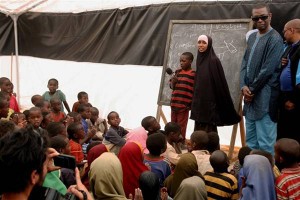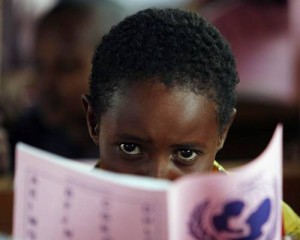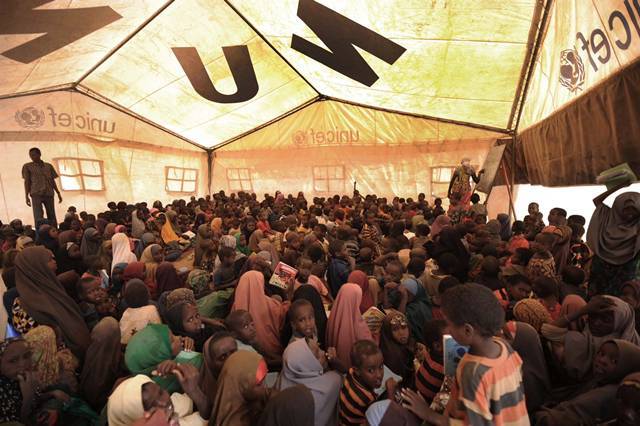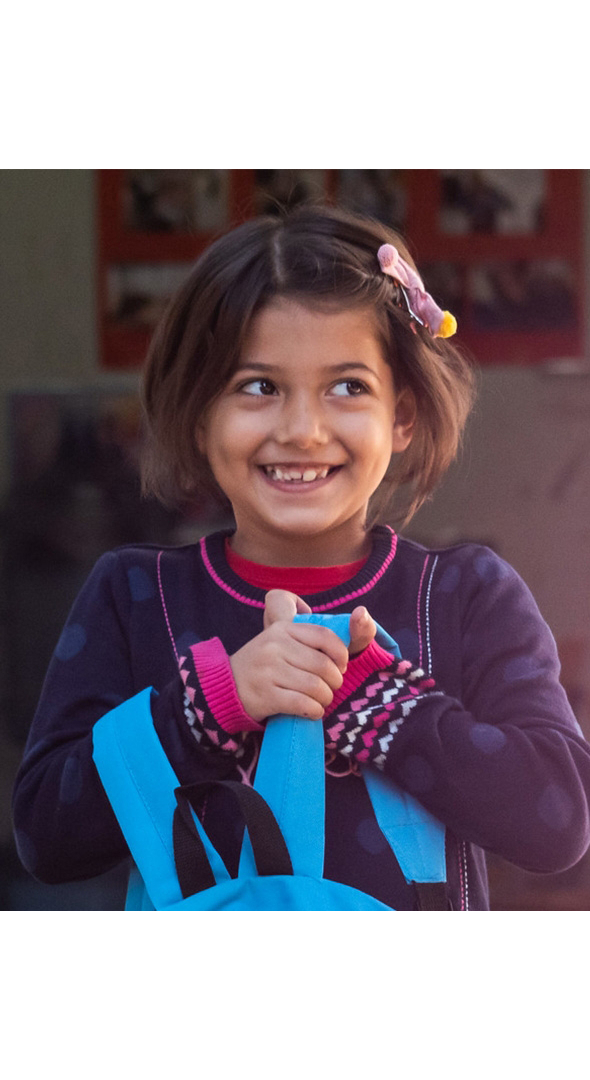聯合國兒童基金會加緊準備教學支援 應付「非洲之角」新學期需要
2011-09-09
奈洛比/香港,2011年9月9日——「非洲之角」的新學年本周正式開始,然而當地旱情未紓,聯合國兒童基金會(UNICEF)正密鑼緊鼓為新學期作好準備,務求受災兒童得以盡享重返校園,接受教育的好處。「如今我們在『非洲之角』的重任,不僅要為受災兒童提供基礎教育,更重要的是透過學校和兒童中心向他們灌輸一些關乎拯救他們生命的知識,包括營養、個人衞生、環境衞生和健康教育等各方面的重要訊息。」UNICEF東南非地區主任Elhadj As Sy先生表示:「對於在難民營的女童和其他弱勢兒童而言,學校不再是遙不可及的地方……在受災的社區,供書教學的地方亦都是可讓兒童享用清潔食水、衞生設施、獲得營養餵飼的地方,甚至是兒童的庇護所,免他們於暴力和剝削的侵害。」
 |
 |
因此,新學年是一個可讓我們針對兒童健康、營養和其他急切需要的工作,得以提升及強化的大好機會。而在新學年開始之前,UNICEF已就兒童教學方面提供以下各項相關的支援:
無懼旱災 延續暑期教學
- 支持眾多在肯尼亞受災社區的學校,在暑假期間照常運作,令逾120萬名兒童因而能夠接受營養餵飼計劃。
- 在本會協助下,在索馬里一共有155所學校在暑假期間繼續辦學,以接收37,000名在當地內陸遷移的兒童。
- 而自本年初開始,UNICEF已成功協助120,000名索馬里兒童就學。未來數月,有關的支援教學工作將進一步擴展,預料可惠及300,000名兒童。
- UNICEF在索馬里的教學夥伴,正設立逾210所「兒童友好家園」,為多達15,000名兒童提供食水、衞生設施、心理支援等服務,並會派發糧食券予受助兒童。UNICEF亦聯同當地的保護兒童夥伴,合共興建350所「兒童友好家園」,並在9月15日前投入服務,預料可惠及30,000名兒童。
- 在埃塞俄比亞,UNICEF及相關的合作夥伴已為約8,000名學童提供臨時學習空間和其他教學物資,並支援當地城市多洛阿多增建多4所學校,包括為約140名教師提供培訓,裝備他們為受災學童提供心裡輔導及宣揚和平的訊息。
- 在肯尼亞,UNICEF與合作夥伴的服務已推展至多所學校和早期學習中心,為多逾60,000名兒童提供睡床、床墊、課室設備和「康樂百寶盒」等物資。
- 在肯尼亞東北部的達達阿比難民營,UNICEF亦特別在新學年開始之前,開設新學年預備班,並且增置帳篷學校和相關物資,以滿足新增的教育需求。

受「非洲之角」目前的旱情影響,導致在災區推行教育工作十分艱鉅。單在索馬里中部和南部,估計已有180萬名兒童因遷徙和治安問題被迫輟學,至於在肯尼亞,由於大批難民湧到當地尋求社區協助,學校正面對沉重的收生壓力,平均每4所學校,只有約1所能夠有限度收容新增的學童。









